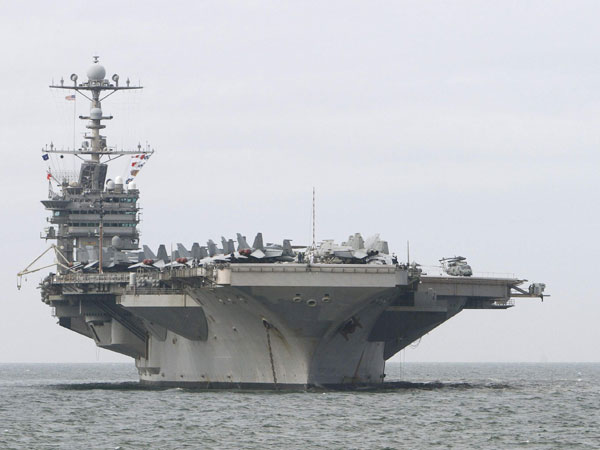As China makes reconciliatory gestures to PH
October 26, 2012
After confirming that Americans are indeed back at Subic, Chinese Vice Foreign Minister and Special Envoy of the Chinese
Government Fu Ying wasted no time to call President Benigno S. Aquino III last week at
Malacañang to impart the message from Chinese President Hu Jintao
that China places great importance and value to the long-standing
friendship with the Philippines.
Beijing began to have second thoughts on its expansionists plan and sent Vice Foreign Minister Fu to expressed
the Chinese government’s desire to move Philippines–China relations
forward to benefit the peoples of both countries.
The sudden change of tack by China in what W. Scott Thompson, geopolitics and defense expert, writing for New York Times and New Straits Times, called serious "miscalculations" on the Philippine resolve to protect its territorial sovereignty.
Thomson said that China flexed its muscle into the country after its President for nine years Gloria Arroyo, let the Chinese have whatever they wanted, in return for personal favours, like broadband project, which allegedly carried a 50 percent cut to President Arroyo before it blew up in their faces.
The United States military, particularly Admiral Samuel Locklear III, Chief of the US Pacific Command based in Hawaii, has said last July that the US is committed to develop a “minimum defense capability” for the Philippines, for which they are now building at Subic Bay transforming it into military logistic hub for Asia Pacific region guarded by three confirmed US nuclear submarines patrolling the South China Sea.
Locklear confirmed that the US Navy will have a semi-permanent rotational presence at Subic Bay, describing deployment as providing "peace of mind" for
Southeast Asia amidst increase maritime insertions of Chinese Navy vessels
into the South China Sea.
US Air Force Brigadier General Mark
McLeod of the US Pacific Command's (PACOM's) Director of logistics,
engineering, and security, said that SBIA will likely be used
to pre-position US logistics assets. Pacom is working with the Defense Department and the U.S. Agency for International Development to identify what materiel assets might be transferred to Subic as U.S. forces draw down in Afghanistan,.
“Part of what this office is doing is looking at the options of where we can forward locate humanitarian assistance capabilities in the theater,” says. McLeod, during an interview at the command’s Honolulu headquarters. “We want to posture them somewhere in the theater that would allow us to react very quickly.”
“Part of what this office is doing is looking at the options of where we can forward locate humanitarian assistance capabilities in the theater,” says. McLeod, during an interview at the command’s Honolulu headquarters. “We want to posture them somewhere in the theater that would allow us to react very quickly.”
He said that the US was
looking for a "very low-cost storage capabilities" for equipment and
supplies in bulk readily available in case of armed conflicts in the Asia Pacific region.
Macleod further said that it might make more sense to forward equipment and supplies to a place where there is "easy access" as opposed to bringing it home and putting it in
central storage facilities.
DFA Visiting Forces Agreement Director
Edilberto Adan described the deployment as providing "peace of mind" for
Southeast Asia in the wake of a series of renewed territorial disputes
in the South China Sea.
Adan said the US will be developing Subic Bay International Airport (SBIA), and San Fernando Airport as military airport.
San Fernando Airport is currently being used for general aviation and charter flights while Subic Bay Airport used to be the Asian hub of American cargo carrier Fedex.
While Philippine
and US officials are keen to emphasise that neither increased military
visits nor the rotational presence of US forces at Subic are a threat to
any other country, they are clearly a point of tension with China.
Several dozen USN ships have anchored in Subic Bay since April's
escalation of the Spratly Islands territorial dispute between Beijing
and Manila.
"We go to many places in [the] region, even the
People's Republic of China itself," a senior US diplomat told Michael Cohen, a correspondent of Jane's Defence Weekly magazine.
"All we offer is stability and security, and we certainly have shown a
respect for sovereignty. We go when asked to leave, and do not claim
what is not ours."
Huntington Ingalls Industries
(NYSE:HII) subsidiary AMSEC recently signed an agreement in April 2012 with Korean shipbuilding giant Hanjin Heavy Industries subsidiary in the Philippines Hanjin Heavy Industries and Construction Philippines, Inc. (HHIC-PHIL) for maintenance, repair and logistics services
works to the US. Navy.



No comments:
Post a Comment